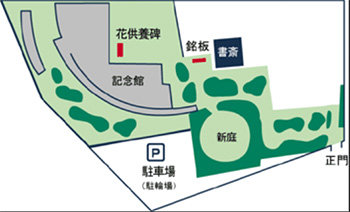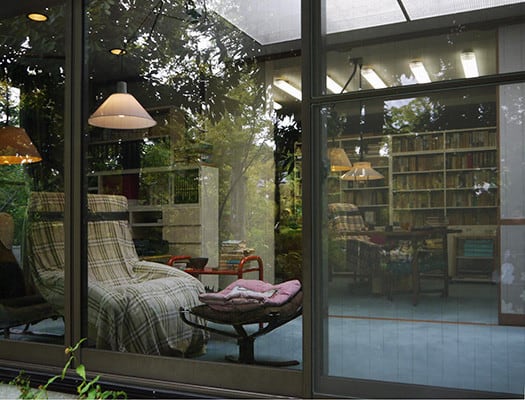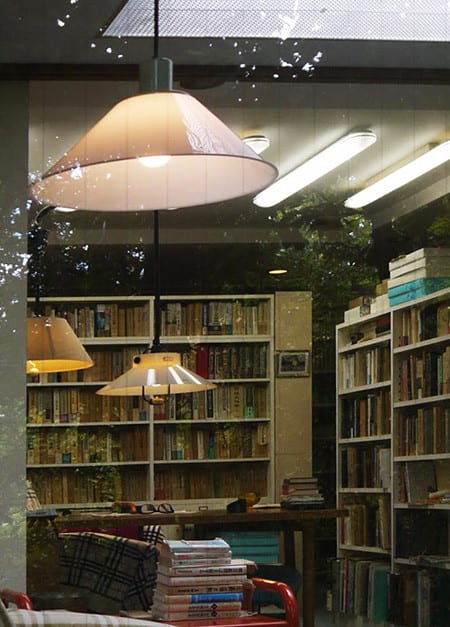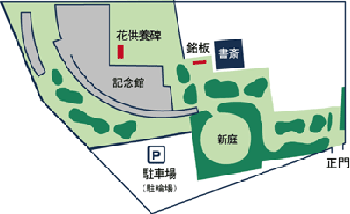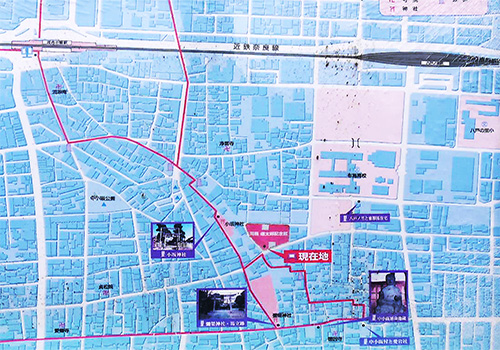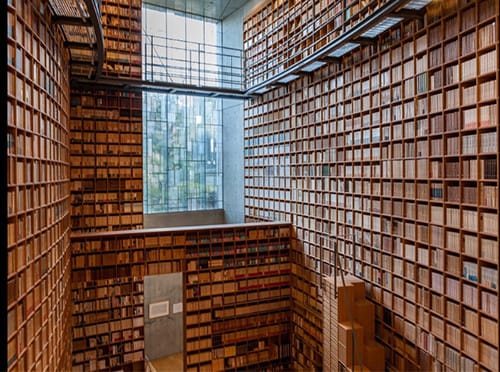
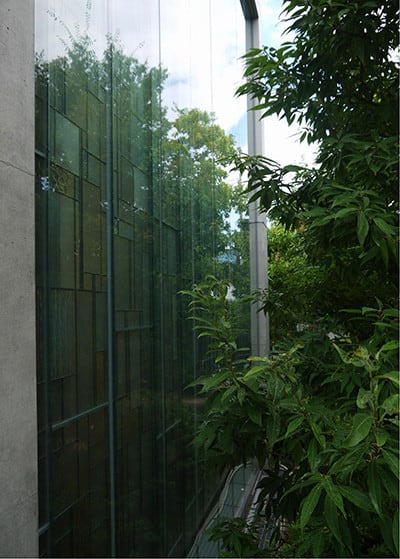
司馬遼太郎記念館というコンセプトで建築を考えるとして
どういうふうに一般人にその意味合いを伝達するのかというのは、
建築人としてはなかなかに考えさせられるテーマだと思います。
で、わたしは事前知識として司馬遼太郎は歴史作家として
大量の「資料書籍」を貯め込んでいて、作家デビューした当時で
すでに借りていた賃貸住宅の床が抜けるのではないかと心配していたという
情報を断片的に持っていたので、それはひとつのキーにはなると思った。
で、安藤忠雄的コンクリート打ち放しという手法を重ね合わせると、
いわば常識的解として、そんな空間イメージを持っていた。
写真はR弧状のアプローチから緑の立木の切れた外見の窓。
ステンドグラスみたいに見えたのは、どうも本棚かと推測できた。
で、内部に入ってみたらごらんのような「本の森林」。
やはりその手で来たか、というのが第1印象でした。
たぶん一般人にもわかりやすい歴史作家の存在証明とは
常人をはるかに超えた「知の巨人」イメージでしょう。
そういうイメージを表現するにはこういうビジュアルが伝わりやすいのはわかる。
設計に当たっての要求項目の第1番が大量の蔵書の保管があったでしょう。
司馬遼太郎の蔵書は6万冊だそうでここに展示しているのは2万冊。
このボリュームの3倍があるのだというのです・・・。
もうひとつは司馬さんの好みとしての「雑木林」。
アプローチの小径も雑木林の表情をそのまま感受するように
大きな1枚板のガラスで仕切られていて雑木林の中の迷宮感がある。
そして知の力感を地下1階地上2階の3層分を吹き抜ける本棚に託した。
もちろんその重量をしっかりと支えるコンクリート建築の力感。
あと要素として考えられるのが、作家が愛した歴史の無数の人間群像との対話。
こういう内面的部分の表現というのは、内部の3層分の吹き抜け空間でしょうか。
このオープンなスペースの空気感は司馬さんの文章の語り口かと。
国盗り物語のはじめの部分では信長的な人格を育んだ尾張の重商的風土性が
書き綴られているけれど、あのような巨視性がこの空間から感じられた。
まぁ建築は人間性のバックグラウンドなので解釈は多様にあると思いますが・・・。
これはわたしの受け止め方ですが、安藤さんの作りようにある納得感があった。
この記念館は多くの愛読者たちからの寄付金で賄われたとされる。
いかにも「国民作家」と呼ばれた司馬遼太郎にふさわしいと思われますね。
English version⬇
[History of Knowledge Forest, Collection of 60,000 Books / Good Japanese House ㉟-5]
Thinking about architecture with the concept of Shiba Ryotaro Memorial Hall
How to convey the meaning to the general public is
I think it's a theme that makes me think about it as an architect.
So, as a prior knowledge for me, Ryotaro Shiba is a historical writer.
He had a large amount of "material books" at the time of his debut as a writer.
He said he was worried that the floor of the rental housing he had already rented would come off.
He had pieces of information, so I thought it would be a key.
So, if you combine the technique of Tadao Ando's exposed concrete,
So to speak, I had such a spatial image as a common sense solution.
The photo above is a window that looks like a green tree cut from an R-arc approach.
I could guess that what looked like stained glass was a bookshelf.
Then, when you go inside, you can see the "book forest".
The first impression was that I came with that hand.
Perhaps what is easy for the general public to understand is the proof of existence as a historical writer
It will be an image of a "knowledge giant" far beyond ordinary people.
I understand that such visuals are easy to convey in order to express such an image.
The first requirement for the design would have been the storage of a large collection of books.
Ryotaro Shiba's collection is said to be 60,000, and 20,000 are on display here.
It is said that there are three times this volume ...
The other is "thickets" as Mr. Shiba's favorite.
Even the small diameter of the approach can feel the expression of the wooded area as it is
It is separated by a large piece of glass and has a labyrinth feel in a wooded area.
And he entrusted the power of knowledge to the bookshelf that blows through the three floors of the first basement floor and the second floor above ground.
Of course, the power of concrete construction that firmly supports its weight.
The rest is a dialogue with the myriad human figures in the history that this writer loved.
Is the expression of such an inner part the atrium space for the three internal layers?
The atmosphere of this open space is the narrative of Mr. Shiba's writing.
In the beginning of the story of Kunitori Monogatari, Owari's mercantilist culture that nurtured a nobunaga personality
Although it is written, I could feel that kind of microscopicity from this space.
Well, architecture is a background of humanity, so I think there are various interpretations ...
It's my way of thinking, but there was a sense of conviction that Mr. Ando made.
The memorial is said to have been funded by donations from many readers.
It seems that it is suitable for Ryotaro Shiba, who was called a "national writer".














